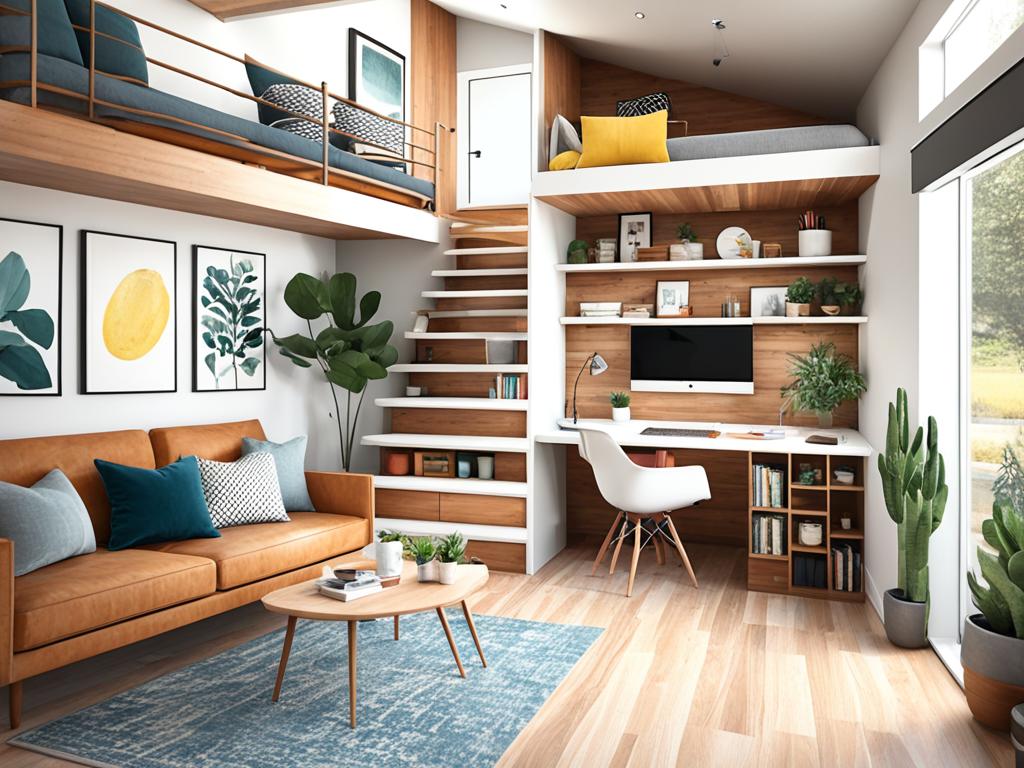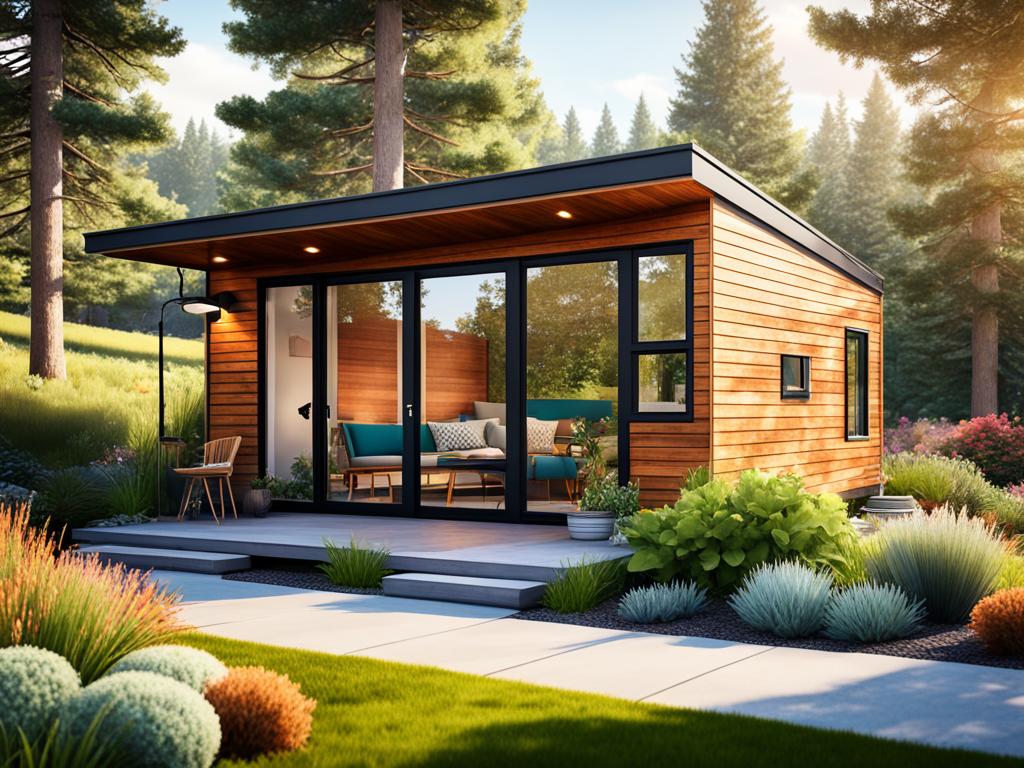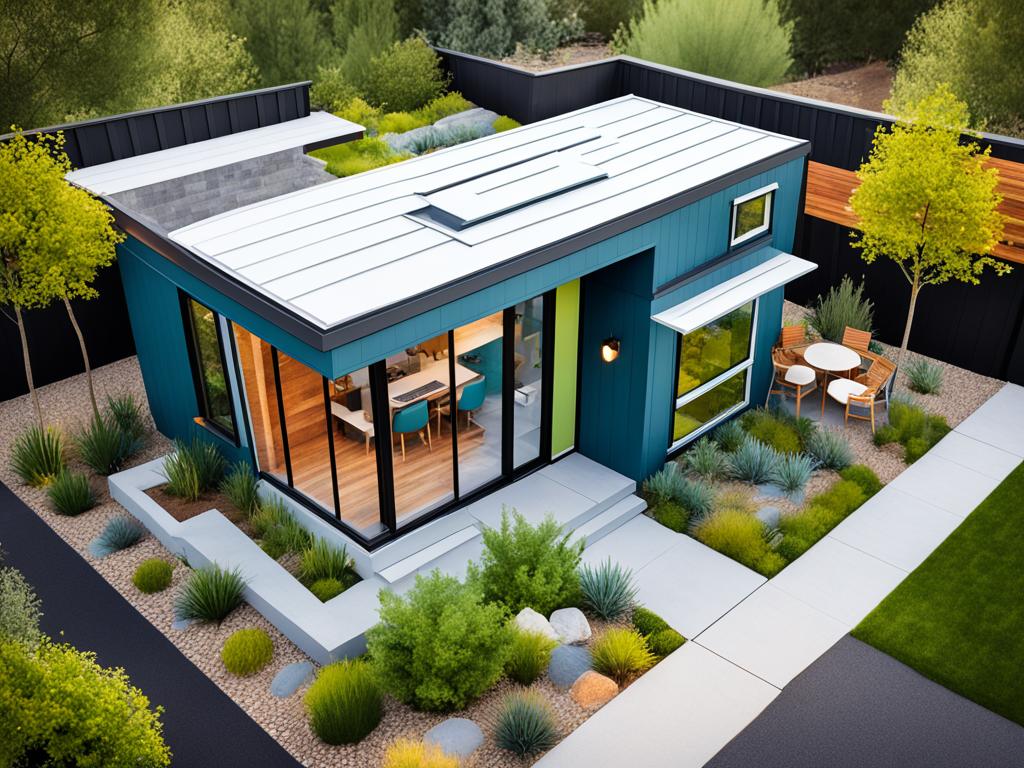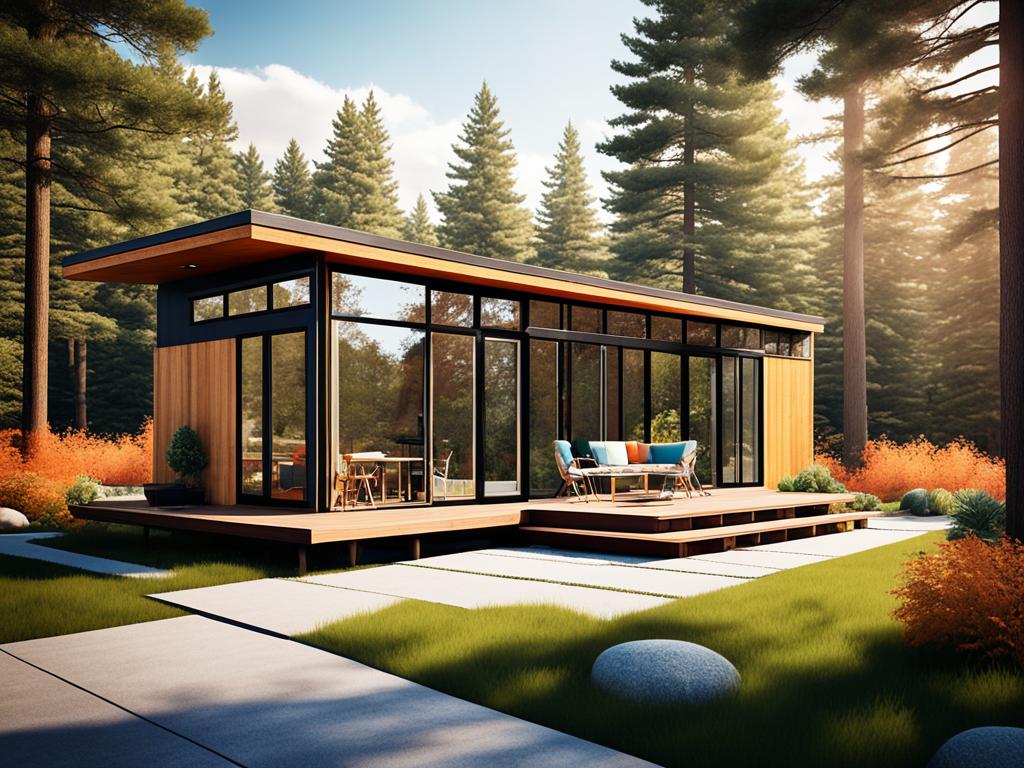Did you know that the average size of a newly built UK home has decreased by 2 square meters over the past 15 years? As the demand for smaller, more sustainable living spaces grows, the appeal of mid-century modern tiny houses is on the rise. These compact homes showcase minimalist architecture, innovative design, and a touch of timeless elegance, making them an ideal choice for those looking to embrace small space living without compromising on style.
Key Takeaways:
- Mid-century modern tiny homes offer a unique combination of style, functionality, and sustainability.
- These homes are characterized by sleek lines, functional layouts, and modern interior design.
- Customization options allow homeowners to optimize space and incorporate ingenious space-saving ideas.
- The design of mid-century modern tiny homes embraces minimalism and uses sustainable materials and energy-efficient systems.
- These homes redefine the concept of compact living and inspire a new generation of homeowners.
Customizing Tiny Homes with Ingenious Space-Saving Ideas
One of the great things about mid-century modern tiny homes is the ability to customize them to fit individual needs and preferences. These homes offer a range of ingenious space-saving ideas that allow homeowners to live comfortably and sustainably in a smaller footprint.
Imagine a tiny home with a retractable roof that lets you stargaze on clear nights or enjoy the warmth of the sun during the day. Or a bed that effortlessly moves up and down at the touch of a button, transforming your sleeping area into a spacious living room. These are just a few examples of the innovative features found in custom mid-century modern tiny homes.
Space optimization is key in these homes, and every inch is maximized to its full potential. Some tiny homes feature stairs that slide into the wall, revealing hidden storage compartments or creating additional floor space. Others have rooftop patios that provide a private outdoor retreat without taking up valuable ground space.
But it’s not just about clever design—it’s also about sustainability. Many mid-century modern tiny homes are built using modular construction techniques, allowing for easy customization and adaptation to suit different lifestyles. Modular construction reduces waste, conserves resources, and promotes a more sustainable approach to housing.
Maximizing Every Inch of Space
One of the key aspects of customizing mid-century modern tiny homes is the use of multipurpose furniture. These homes are designed with compact living in mind, and every piece of furniture serves a dual purpose. For example, a dining table may double as a workspace, or a coffee table may have built-in storage compartments. This creative use of furniture not only saves space but also adds functionality to the living areas.
Additionally, homeowners can customise their tiny homes with modular storage systems that optimize vertical space. From wall-mounted shelves to overhead cabinets, these storage solutions help keep the living area clutter-free while providing ample space to store belongings.
Custom mid-century modern tiny homes are truly a testament to the art of space optimization and sustainable living. With their clever design features, modular construction techniques, and compact layouts, these homes offer a stylish and eco-friendly solution for those seeking a minimalist lifestyle without compromising on comfort.

Stay tuned for the next section where we dive into the design and features of a mid-century modern tiny home.
The Design and Features of a Mid-Century Modern Tiny Home
The design of a mid-century modern tiny home is inspired by the clean lines and simplicity of the mid-century modern architectural style. These homes often feature asymmetrical profiles, reminiscent of traditional A-frame cabins, with a modern twist.
The interiors are designed with functionality in mind, offering open-plan layouts that optimize the use of space. Key features of these homes include large windows to maximize natural light, sustainable materials and finishes, and energy-efficient systems.
The modern interior design combines minimalism with a curated selection of furniture and decor to create a sleek and stylish living space.

Key Design Features:
- Asymmetrical profiles reminiscent of traditional A-frame cabins
- Open-plan layouts for optimal space utilization
- Large windows for maximum natural light
- Sustainable materials and finishes
- Energy-efficient systems
A mid-century modern tiny home combines the principles of eco-friendly living with a functional layout and modern interior design. It offers homeowners an opportunity to live sustainably and stylishly in a compact space.
Case Study: Elegant Tiny House with Tailored Design
One example of a mid-century modern tiny house is the custom-built residence of a couple based in British Columbia, Canada. The design of their 362-square-foot home was guided by their active lifestyle and desire for a functional space that could accommodate their needs.
The tiny house features a multipurpose living area with a large picture window, ideal for practicing and teaching yoga. The functional layout includes a kitchen with essential appliances, an open-plan office area, and a bathroom with a spacious shower and storage. The design incorporates sustainable materials and energy-efficient features, showcasing the couple’s commitment to sustainable living.

Conclusion
Mid-century modern tiny houses offer a unique combination of style, functionality, and sustainability. These homes demonstrate that living in a small space doesn’t mean sacrificing comfort or aesthetics. With clever customizations, functional layouts, and modern interior design, these tiny homes provide an opportunity to embrace a minimalist lifestyle and reduce our environmental footprint.
Mid-century modern tiny houses are redefining the concept of compact living and inspiring a new generation of homeowners. Whether it’s a custom-built residence or a production model, these homes offer the perfect solution for those who value efficient use of space without compromising on design.
By incorporating mid-century modern principles, such as clean lines and sustainable materials, these tiny houses create a harmonious blend of form and function. They allow individuals and families to embrace small-space living and experience the benefits of minimalist architecture in a way that is practical, stylish, and environmentally friendly.






Join The Discussion